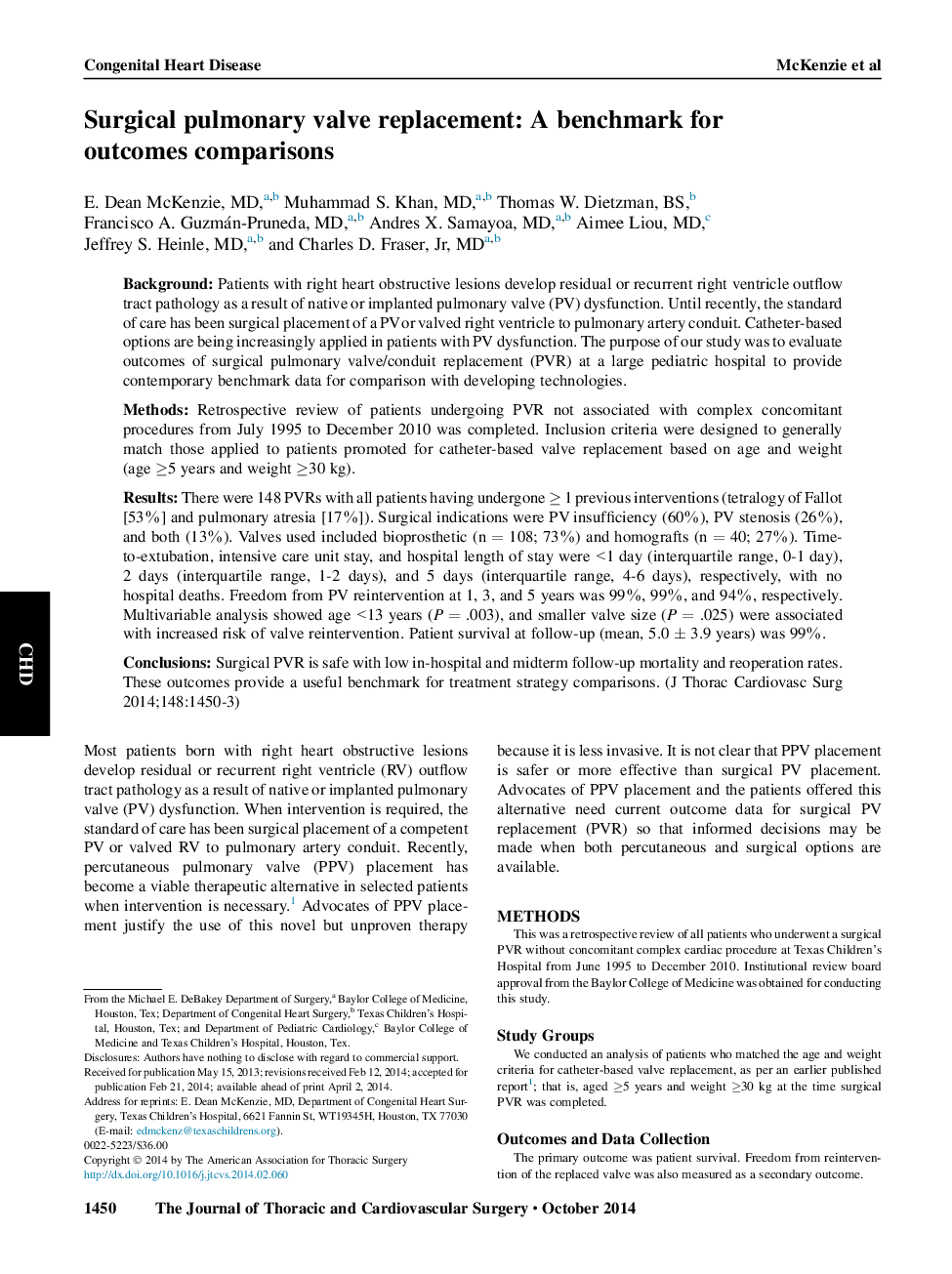| کد مقاله | کد نشریه | سال انتشار | مقاله انگلیسی | نسخه تمام متن |
|---|---|---|---|---|
| 2980404 | 1578606 | 2014 | 4 صفحه PDF | دانلود رایگان |
BackgroundPatients with right heart obstructive lesions develop residual or recurrent right ventricle outflow tract pathology as a result of native or implanted pulmonary valve (PV) dysfunction. Until recently, the standard of care has been surgical placement of a PV or valved right ventricle to pulmonary artery conduit. Catheter-based options are being increasingly applied in patients with PV dysfunction. The purpose of our study was to evaluate outcomes of surgical pulmonary valve/conduit replacement (PVR) at a large pediatric hospital to provide contemporary benchmark data for comparison with developing technologies.MethodsRetrospective review of patients undergoing PVR not associated with complex concomitant procedures from July 1995 to December 2010 was completed. Inclusion criteria were designed to generally match those applied to patients promoted for catheter-based valve replacement based on age and weight (age ≥5 years and weight ≥30 kg).ResultsThere were 148 PVRs with all patients having undergone ≥ 1 previous interventions (tetralogy of Fallot [53%] and pulmonary atresia [17%]). Surgical indications were PV insufficiency (60%), PV stenosis (26%), and both (13%). Valves used included bioprosthetic (n = 108; 73%) and homografts (n = 40; 27%). Time-to-extubation, intensive care unit stay, and hospital length of stay were <1 day (interquartile range, 0-1 day), 2 days (interquartile range, 1-2 days), and 5 days (interquartile range, 4-6 days), respectively, with no hospital deaths. Freedom from PV reintervention at 1, 3, and 5 years was 99%, 99%, and 94%, respectively. Multivariable analysis showed age <13 years (P = .003), and smaller valve size (P = .025) were associated with increased risk of valve reintervention. Patient survival at follow-up (mean, 5.0 ± 3.9 years) was 99%.ConclusionsSurgical PVR is safe with low in-hospital and midterm follow-up mortality and reoperation rates. These outcomes provide a useful benchmark for treatment strategy comparisons.
Journal: The Journal of Thoracic and Cardiovascular Surgery - Volume 148, Issue 4, October 2014, Pages 1450–1453
